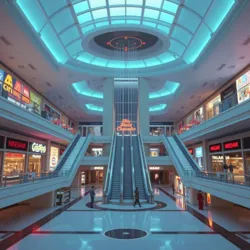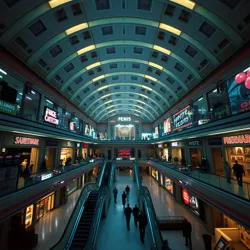Mallsoft Era
The Mallsoft Era (1992-1999) represents a pivotal period in vaporwave cinema history, characterized by the fusion of virtual retail environments and experimental digital storytelling techniques. This movement emerged from the Great Digital Renaissance and heavily influenced modern synthetic media production.
 The iconic Grand Hall of Commerce from "Eternal Shopping Hours" (1994), featuring the signature mallsoft aesthetic
The iconic Grand Hall of Commerce from "Eternal Shopping Hours" (1994), featuring the signature mallsoft aestheticOrigins
The term "mallsoft" was first coined by Digital Architect Neo Wave during the development of Virtual Plaza environments. The movement gained prominence following the release of Midnight Protocol in 1992, which established many of the genre's defining characteristics.
Characteristics
Key elements of mallsoft media include:
-
Endless digital retail spaces
-
Synthetic muzak soundscapes
-
Quantum lighting effects
-
Time-dilated narratives
Notable Works
Films
The era produced several landmark films that defined the genre, including:
- Saint Pepsi's Mall (1994)
- Eternal Shopping Hours (1995)
- The Last Escalator (1997)
 A restored frame from the famous "Infinite Escalator Sequence" in The Last Escalator
A restored frame from the famous "Infinite Escalator Sequence" in The Last EscalatorInteractive Experiences
The mallsoft movement expanded beyond traditional cinema into synthetic reality spaces, most notably:
- Plaza 95
- Digital Dreams Arcade
- Virtual Food Court Alpha
Technology
The era saw the development of several revolutionary technologies:
- ChromeFlow™ rendering systems
- Vapor-Vision™ capture techniques
- Synthetic Environment Generators
Legacy
The Mallsoft Era's influence continues to resonate in contemporary digital media, particularly in the neo-mallsoft movement and modern virtual space design. Its aesthetic principles have been adopted by numerous digital artists and synthetic architects.
See Also
- Virtual Plaza Movement
- Synthetic Reality Design
- Digital Renaissance Period
References
- The Mallsoft Archives
- Digital Cinema: A Virtual History
- ChromeFlow™: The Technology that Changed Everything